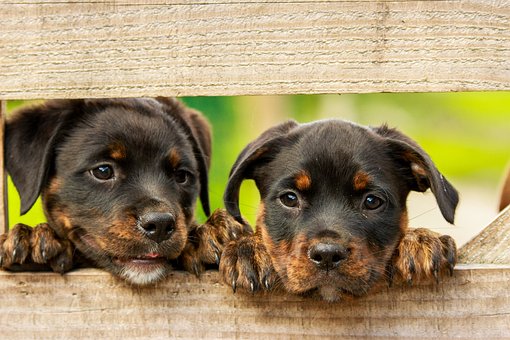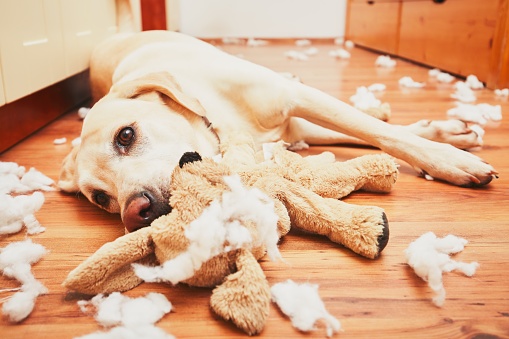As an experienced dog owner, you know that every dog has its personality and quirks. Some dogs are protective, some are gentle, and some are excitable and playful.
They can be small or large, quiet or loud, energetic or low-key. Deciding which breed of dog will be the best fit in your home takes research, but it’s worth it in the end!
Here’s what you need to know about the Best First Dogs to Own and how to choose them
CHOOSING AN EASY GOING DOG:

Not all dogs are equally well-suited for first-time dog owners.
Some breeds are naturally more playful, energetic, or protective than others—all characteristics that may make them difficult for new owners to handle.
If you’re looking for a great first dog, consider one of these easy-going pooches! With training and love, they will adapt quickly.
Although all dogs require some level of care and responsibility, these breeds are especially well suited for first-time dog owners.
Get a pup (or two!) who matches your lifestyle now—and in ten years when you have even less time or energy.
You can always adopt another! And remember, no matter what breed you choose, there is no such thing as an easy dog.
Every single breed requires commitment and work from its owner. The goal here is just to find a good match for your personality and schedule.
Good luck with your search! There are many factors to consider when choosing a dog for your family.
Size, temperament, exercise needs, and grooming requirements are among those things.
But we often forget about other important factors like medical issues common in certain breeds; behavioral traits like digging or chewing things up around the house, and compatibility with other pets you might already own.
This guide is designed to help take some of that mystery out of choosing a breed by covering 10 questions to ask yourself before picking out a puppy or adult dog.
This resource guide has been created by passionate pet parents whose goal is to help make choosing your next furry friend as easy as possible.
CHOOSE A FAMILIER BREED

As you think about what your first dog will be, it’s a good idea to think about choosing a breed that is familiar to you.
Familiar breeds are breeds you are already familiar with from growing up around them. This makes it easier for you as an owner because of your experience living with these kinds of dogs.
As well, many people can afford a new puppy more easily than a full-grown dog that has already been spayed or neutered, so getting a young puppy is one way you can save money at first when getting into dog ownership.
Some examples of familiar breeds include poodles, German shepherds, golden retrievers, Labrador retrievers, and collies.
These dogs have long lifespans (many over ten years) but also require regular grooming.
You may want to consider a less common but less expensive breed such as a Jack Russell terrier, if you’re looking for something like that in terms of personality,
but also something not too high maintenance in terms of grooming requirements (and they don’t usually have lifespans longer than twelve years).
If you want a larger dog with a long life expectancy but low maintenance requirements, choose a mastiff or bloodhound.
For smaller dogs who live shorter lives (usually eight to twelve years), choose chihuahuas or dachshunds.
CONSIDER COST AND SPACE

The costs associated with owning a dog are considerable, so you want to make sure you choose a breed that’s good for your home size and budget.
The annual cost of owning a dog can range from $1,000 (for a Pug) to more than $7,000 (for an Irish Wolfhound).
Also, consider whether you plan on buying your puppy from a breeder or adopting one from an animal shelter.
Adopting is often cheaper, but it may take longer to find a match. It’s also important to think about how much space you have in your home.
Smaller dogs do better in smaller spaces; bigger dogs need room to roam around and stretch their legs.
If you live in an apartment building or other small space, be mindful of how much energy your dog will require before bringing him into your life.
You don’t want to bring home a pet only to discover he needs too much exercise for your living situation.
That said, if you work long hours during the day, having a high-energy dog who gets plenty of physical activity while you’re away might not be such a bad thing.
Stick With Well-Tempered Breeds:
Temperament matters when choosing the first dog because it affects your bond with your new best friend.
Certain breeds are just better suited for people who lead busy lives—they tend to get along well with others and adapt easily to different situations.
For example, labs are highly trainable and generally get along well with children and other pets.
But they aren’t necessarily great watchdogs—which means they won’t sound alarm bells if someone comes knocking at your door late at night or early in the morning when no one else is awake.
Housebreaking New Pets
Housebreaking a new pet can be hard. Fortunately, there are a few basic steps you can take that will increase your chances of success.
For example, never leave your dog alone with free access to any part of your home while they’re still learning.
This ensures accidents aren’t an option during housebreaking training, helping them learn faster and reducing their chances of developing bad habits later on.
Be consistent! If you don’t want your dog going in certain places (like beds), then don’t let them go there while they’re housebroken.
It can be tempting to give in occasionally, but rewarding good behavior will make training easier overall and it means less cleanup down the road!
Use positive reinforcement! Rewarding good behavior is key to teaching dogs what we want from them.
Make sure you’re using positive reinforcement (like treats or praise) when your dog does something right so they know what to do next time.
Consistency is important here, too; if you reward your dog for doing something once, do it every time, or else they won’t know why it worked before and might not try again when needed.
Never punish mistakes! Punishing mistakes teaches dogs that doing something wrong results in punishment, which makes them more likely to hide mistakes rather than try again later when no one is watching.
Finding Expert Advice Before Getting a Puppy

As important as it is to do your research before getting a puppy, you should also find an expert or two—such as a veterinarian or dog trainer—to guide you.
These experts can help point out any holes in your plan and make sure you’re doing everything possible to keep your pup healthy and happy.
In other words, if you decide to get a puppy after reading this post, don’t let that be your only research.
Do some digging of your own—and then find someone who knows their stuff so they can help guide you through it all.
You may just save yourself from a lot of trouble down the road.
Best Breeds for First-Time Dog Owners

Once you know what kind of dog you want, it’s time to start thinking about which breed is best for your lifestyle.
When looking at breeds for first-time dog owners, there are a few traits that stand out as ideal—calm demeanor, easy maintenance, and low energy levels.
For example, if you live in an apartment or condo in an urban area with little outdoor space, a high-energy breed isn’t a good fit.
Similarly, large dogs can present problems for older people or those with limited mobility.
But don’t worry—there are plenty of easy dogs out there that make great pets.

